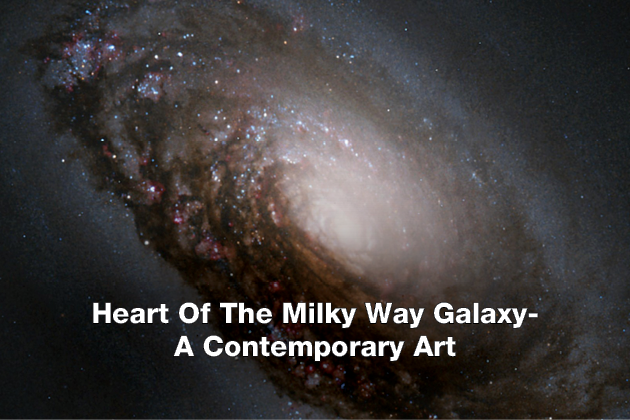An image that looks like a Trippy Eye of Sauron or Splatter of modern art is the actual detailed picture of our Milky Way Galaxy’s chaotic center, seen in the radio wavelength.
The image was taken by Meer-Kat Radio Telescope array in South Africa over the course of three years and 200 hours of observation. It combines 20 different images into- ‘ONE MOSIAC’, with bright, star-dense galactic plane running through it horizontally.
The image has been described in the Astrophysical Journal paper published by Meer-Kat.
It captured radio waves from several astronomical treasures, which included Supernova’s, energetic region around the supermassive Black-hole at the galaxies center and Stellar nurseries.
One of the most intriguing features of the images are, the many Wispy-looking radio filaments that cut vertically through the image. Handful of these filaments were first spotted or seen in the 1980’s, which were created by accelerated electrons gyrating a magnetic field and creating a radio glow.
Earlier scientists knew of only few filaments, that they could only study one at a time, but now with Meer-Kat they have discovered and revealed hundreds of them.
The supermassive black gap Sagittarius A, sits on the heart of the Milky Way Approach and shines within the decrease heart of this close-up picture from the Meer-KAT radio telescope.
Mysterious skinny filaments are visible through the galaxy’s heart. The Meer-KAT telescope uses 64 antennae spread over almost five miles (8 km) to capture radio waves. Only radio waves can cut through the layers of cosmic dust between the Earth and our galaxy’s centre.
Meer-KAT is positioned to provide insight into the densely packed zone. The newly-released images are an impressive showcase for Meer-KAT’s power.
Though the images look like abstract contemporary artwork, they show “out-bursting stars, chaotic region and stellar nurseries around the 4 million solar mass supermassive black hole that rests in the centre of our Galaxy,” according to SARAO.
Dr Ian Heywood from the University of Oxford, and the lead author of the study says, “I’ve spent a lot of time looking at this image in the process of working on it and I never get tired.”
Unaffected by the large quantities of dust that obstruct the central galactic region, radio waves reveal a scene of striking complexity produced by the interplaying effects of, high density of cosmic rays, star formation and the foreboding supermassive black hole known as Sagittarius A*.
“I am in awe every single time I look at the images,” says Isabella Rammala, a graduate student at Rhodes University in South Africa.
It is just astonishing how many details Meer-KAT could capture.



